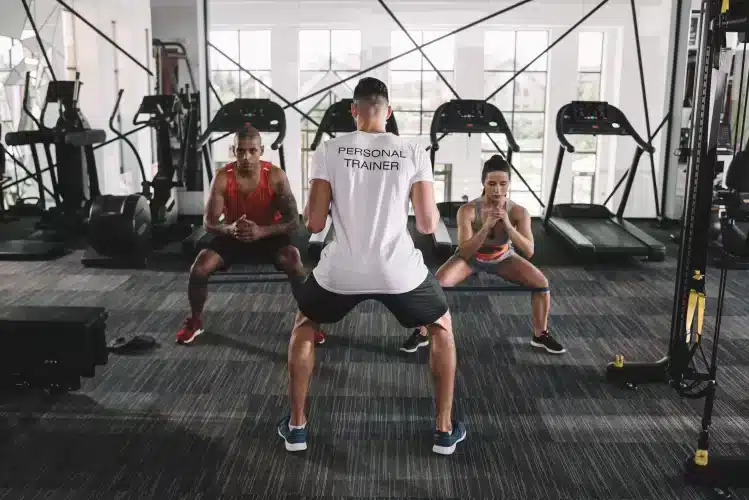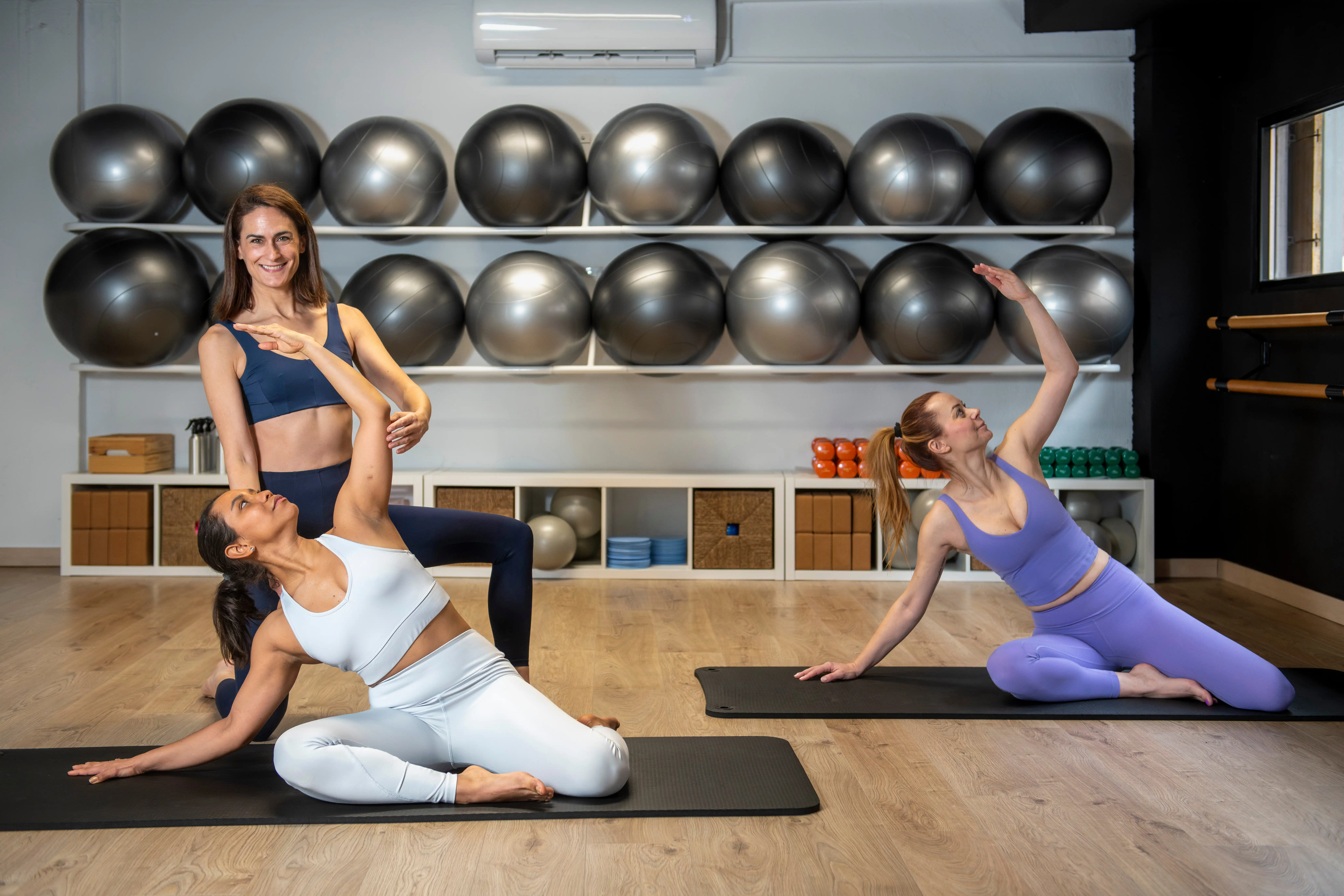What is HyFlex Learning at NPTI Florida?
that can integrate in-class instruction, online synchronous video sessions, or asynchronous content delivery. As an NPTI Florida personal training student, you attend the class as you would in a regular classroom, but you may attend in person, participate in the class through video conferencing, or watch a recording of the class session. Our 600-hour ACCSC-accredited program is truly delivered as HyFlex Learning.
• Who determines how and when the learner participates? The instructor or the learner? At NPTI Florida, the student may opt to participate online, self-paced, rather than in-person; our program is considered HyFlex. A HyFlex program is offered face-to-face or online (asynchronously or synchronously). Therefore, our career Diploma program is a HyFlex program delivered synchronously (in-person or online) or asynchronously online. The main consideration is flexible options and student flexibility. This model provides the most flexibility for our personal training students.

Hyflex Course Descriptions
Personal Fitness Training Course Outline
Courses are completed sequentially as offered. The course numbers are based on course codes established by NPTI and do not relate to state common numbering systems. A clock hour is 50 minutes. The program has been reviewed by professional associations.
Course Detail
| Course # | Course Title and Description | Theory Hours | Practicum/ Lab Hours |
Total Hours | Online | Hyflex/ In Person |
|---|---|---|---|---|---|---|
| PF101 | Legal Guidelines & Business Management Presents legal issues, business concerns, and summarizes the legal responsibilities of a personal trainer. Students learn the scope of practice of personal training. Student learns the steps behind starting their own personal training business. |
18 | 18 | |||
| PF102 | Health Screening & Fitness Evaluations Teaches the student to use client’s health history to create a safe and effective training program. |
8 | 8 | |||
| PF103 | Cardio Fitness Training Presents various training methods and cardio respiratory activities that can be used to meet specific needs. |
24 | 24 | |||
| PF104 | Muscular Strength & Endurance Presents the benefits of strength training and methods of incorporating various types of training equipment. |
3 | 3 | |||
| PF105 | Strength Training Program Design Presents ways to create and modify a strength‑training program that will meet the psychological and physical needs of the client. |
160 | 160 | |||
| PF106 | Communication & Teaching Presents the methods of establishing and maintaining a helping relationship with clients, resulting in positive lifestyle changes. Includes teaching techniques. |
2 | 2 | |||
| PF107 | Flexibility & Stretching Presents the science and research behind flexibility training methods that will help to attain fitness goals and decrease the risk of injury. |
6 | 6 | |||
| PF109 | Human Anatomy & Physiology Presents the structure and function of ten major systems within the human body; cardiovascular, respiratory, nervous, skeletal, muscular, endocrine, integumentary, digestive, excretory, reproductive, and biomechanics and kinesiology of the body as it pertains to exercise. |
100 | 100 | |||
| PF110 | Nutrition Presents information on the basic nutrients and nutritional needs of physically active adults. Includes the standards of practice, energy & body composition, and daily energy needs. |
100 | 100 | |||
| PF111 | Musculoskeletal Injuries, Emergency Procedures & Injury Rehab Presents how to develop programs for clients with pre-existing musculoskeletal injuries, and also how to deal with other injuries and common medical emergencies. |
10 | 10 | |||
| PF112 | Personal Training Advertising & Marketing Presents advertising and marketing concerns of the Personal Trainer’s business. Includes how to utilize social media marketing tools. |
25 | 25 | |||
| PF113 | Adherence & Motivation Presents the factors that influence exercise adherence, and the methods for keeping clients motivated. |
3 | 3 | |||
| PF114 | Core Training & Stabilization Core training, core musculature and the importance of training the stabilization systems. |
12 | 12 | |||
| PF115 | Resistance Training Systems Progressive adaptations from resistance training with reference to stabilization, muscular endurance, hypertrophy, strength & power. |
12 | 12 | |||
| PF116 | Biomechanics Muscular force, length‐tension relationships, force‐velocity curve, and force‐couple relationships. |
3 | 3 | |||
| PF117 | Special Health Concerns Students learn client health concerns and the resulting modifications required from basic exercises and exercise programs. |
2 | 2 | |||
| PF118 | Supplementation Dietary supplements, supplementation guidelines, dietary reference intake values and guidelines. |
6 | 6 | |||
| PF119 | CPR/AED & First Aid Students are certified in CPR & First Aid by a Red Cross certified technician. |
5 | 5 | 5 | ||
| PF120 | Special Populations Physiologic and training considerations for individuals with specific health concerns. This includes but is not limited to obesity, coronary heart disease, asthma, pregnancy, osteoporosis, cancer and diabetes. |
30 | 30 | |||
| PF121 | Final Review & Test (Theory) Final exam to test the student on all aspects of training, Anatomy, Physiology and Nutrition. |
9 | 9 | |||
| PF122 | Final Review & Test (Practical) Final practical exam where the student must perform 5 tests so that the students are capable of evaluating and testing clients in a fitness center. |
8 | 8 | |||
| PF123 | Practical Application The experience and application part of the training is designed to evaluate, design, and implement a complete workout for a fellow student or client. Documentation of weight, body fat, strength results and workout changes must be presented to the instructor on a weekly basis. |
50 | 50 | |||
| Total Hours | 382 | 218 | 600 | 100 | ||
100‑Hour Practical Content Allocation
| Task | Hours |
|---|---|
| CPR | 5 |
| Body fat analysis and metabolic calculations | 10 |
| Blood pressure, circumference measurements, waist‑hip ratios & flexibility tests | 10 |
| VO₂max testing techniques | 5 |
| Functional Movement Screening (FMS) | 15 |
| Static & translational movement analysis | 5 |
| Corrective exercise analysis | 15 |
| Neuromuscular performance tests | 5 |
| Advanced resistance training systems | 20 |
| Cardiovascular training systems | 5 |
| Group training/instructing | 5 |
| Total | 100 |


